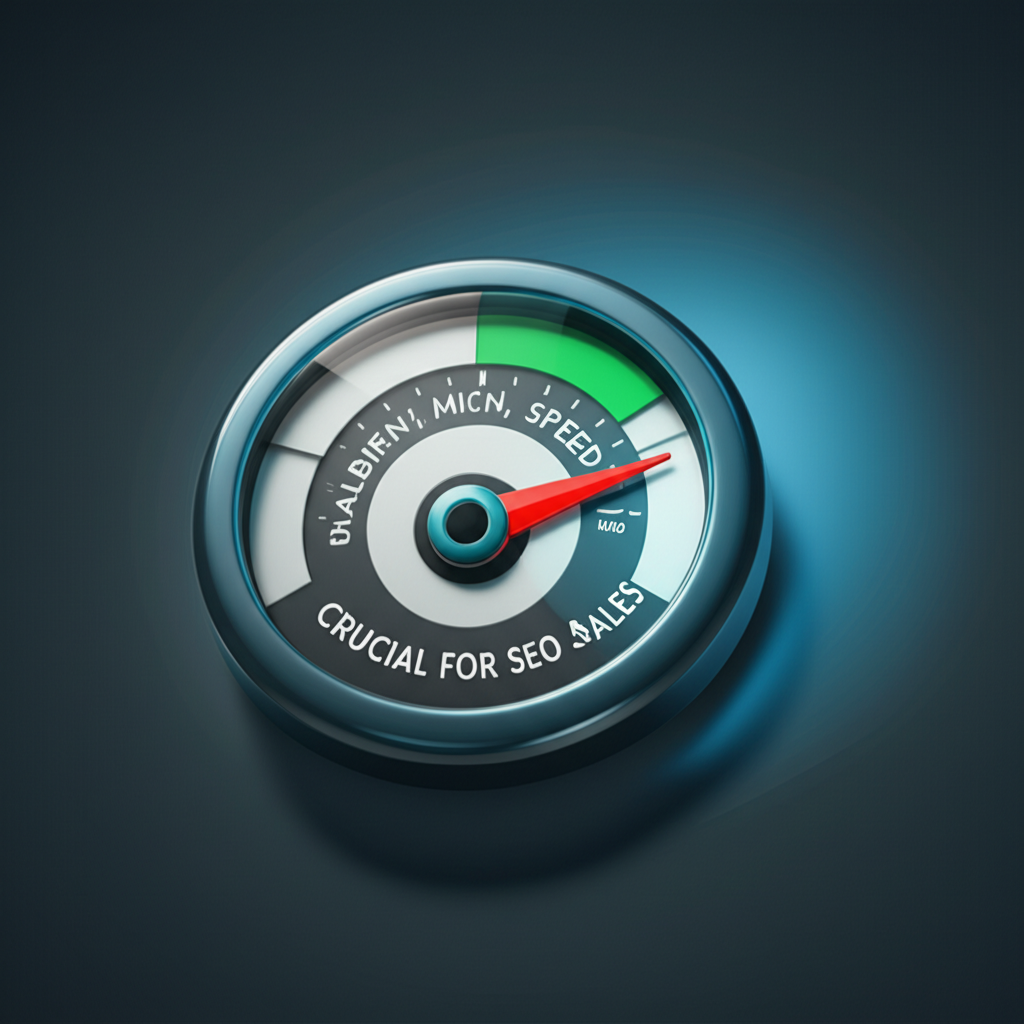- Why Website Speed Matters for SEO
- Core Web Vitals and Their Impact
- The Impact of Website Speed on Sales
- Boosting Conversions with Optimized Website Speed
- How to Improve Your Website Speed
- Website Speed: A Continuous Investment
Website Speed: Crucial for SEO & Sales
Website speed is a critical factor impacting both your search engine optimization (SEO) and sales. A slow-loading website can frustrate visitors, leading to higher bounce rates, lower conversion rates, and ultimately, a negative impact on your bottom line. In today’s fast-paced digital world, users expect websites to load almost instantaneously. If your site takes too long, they’ll likely abandon it for a competitor’s, costing you valuable leads and potential customers.
Why Website Speed Matters for SEO

Google and other search engines prioritize user experience. A slow website contributes to a poor user experience, and as a result, search engines penalize slow-loading sites by lowering their rankings. This makes it harder for potential customers to find you organically. Furthermore, Google uses page speed as a direct ranking factor in both its desktop and mobile search algorithms. This means that improving your website speed can directly boost your search engine visibility.
Core Web Vitals and Their Impact
Google’s Core Web Vitals are a set of metrics that measure user experience related to loading, interactivity, and visual stability. These vitals are crucial ranking factors and include:
Largest Contentful Paint (LCP): Measures how long it takes for the largest content element on a page to become visible.
First Input Delay (FID): Measures the time it takes for a page to become interactive.
* Cumulative Layout Shift (CLS): Measures the visual stability of a page and how much elements shift unexpectedly during loading.
Optimizing your website to improve these Core Web Vitals is essential for both user experience and SEO. A site with good Core Web Vitals scores is more likely to rank higher in search results, leading to increased organic traffic.
The Impact of Website Speed on Sales
Beyond SEO, website speed directly influences your sales and revenue. A slow website creates a negative impression on potential customers. Studies show that even a one-second delay in page load time can lead to a significant drop in conversions. This is because users are impatient and expect a seamless online experience. If your website doesn’t deliver that, they’ll simply go elsewhere.
Boosting Conversions with Optimized Website Speed
Faster loading times contribute to a better user experience, which in turn, leads to higher conversion rates. When visitors can easily navigate your site, find the information they need quickly, and complete transactions without delays, they’re more likely to become paying customers. This translates to increased sales and a healthier bottom line.
How to Improve Your Website Speed
Optimizing your website speed isn’t just a one-time task; it’s an ongoing process. Here are some key strategies to improve your website’s performance:
1. Optimize Images: Large image files are a common culprit for slow loading times. Compress your images without sacrificing quality using tools like TinyPNG or Optimizilla. Use appropriate image formats (JPEG for photos, PNG for graphics) and implement lazy loading to defer loading of off-screen images.
2. Leverage Browser Caching: Browser caching allows repeat visitors to load your site faster by storing static assets like images, CSS, and JavaScript files locally. Configure your server to set appropriate caching headers.
3. Minimize HTTP Requests: Each element on your webpage (images, scripts, stylesheets) requires an HTTP request. Reducing the number of these requests can significantly improve your website’s loading speed. Combine and minify CSS and JavaScript files to reduce the overall file size and the number of requests.
4. Choose a Reliable Hosting Provider: Your hosting provider plays a crucial role in your website’s speed. Opt for a reputable provider with robust servers and infrastructure to ensure optimal performance. Consider upgrading to a faster hosting plan if necessary.
5. Use a Content Delivery Network (CDN): A CDN distributes your website’s content across multiple servers around the world. This allows users to access your site from the server closest to them, reducing latency and improving loading times.
6. Employ Mobile-First Design: With the majority of internet traffic now coming from mobile devices, optimizing your website for mobile is essential. Implement responsive design to ensure your site adapts seamlessly to different screen sizes.
7. Regularly Monitor and Analyze: Use tools like Google PageSpeed Insights, GTmetrix, and WebPageTest to regularly monitor your website’s performance and identify areas for improvement. These tools provide detailed reports and actionable recommendations.
Website Speed: A Continuous Investment
Investing in website speed is crucial for both your SEO and sales performance. By optimizing your site’s loading time, you improve user experience, boost your search engine rankings, increase conversion rates, and ultimately, drive revenue growth. It’s a continuous process that requires ongoing attention and optimization, but the rewards are well worth the effort. Make website speed optimization a priority and watch your online presence flourish.











Leave a Reply